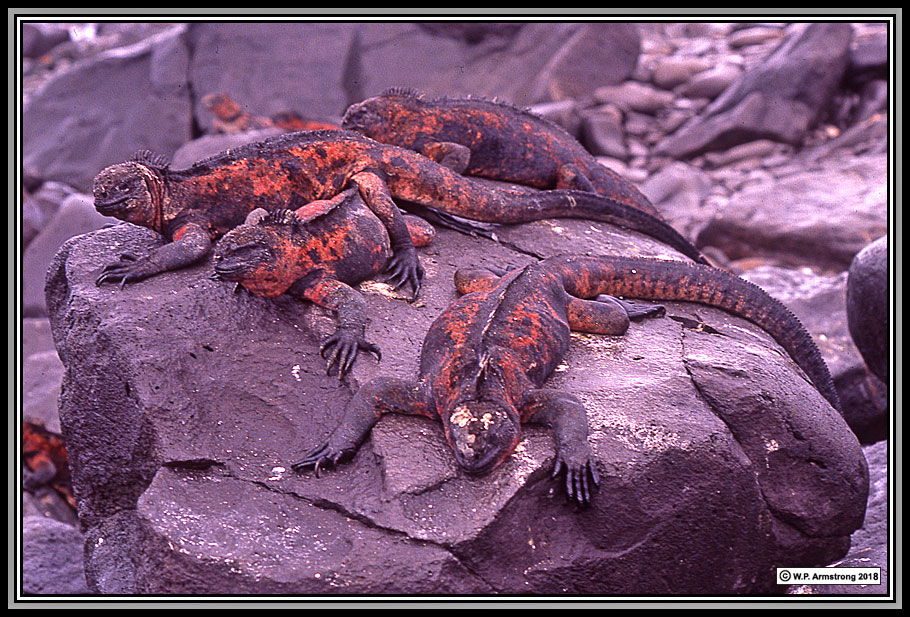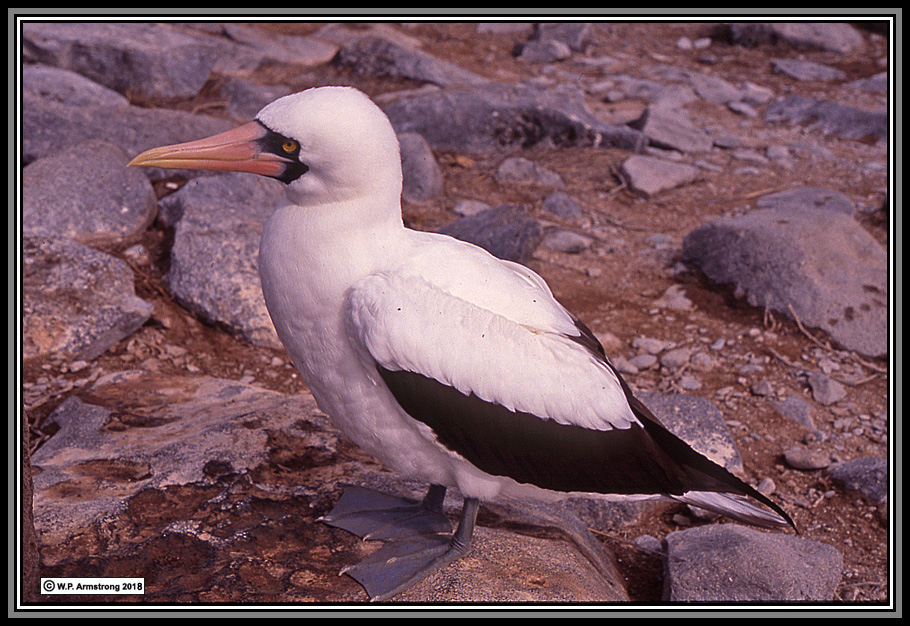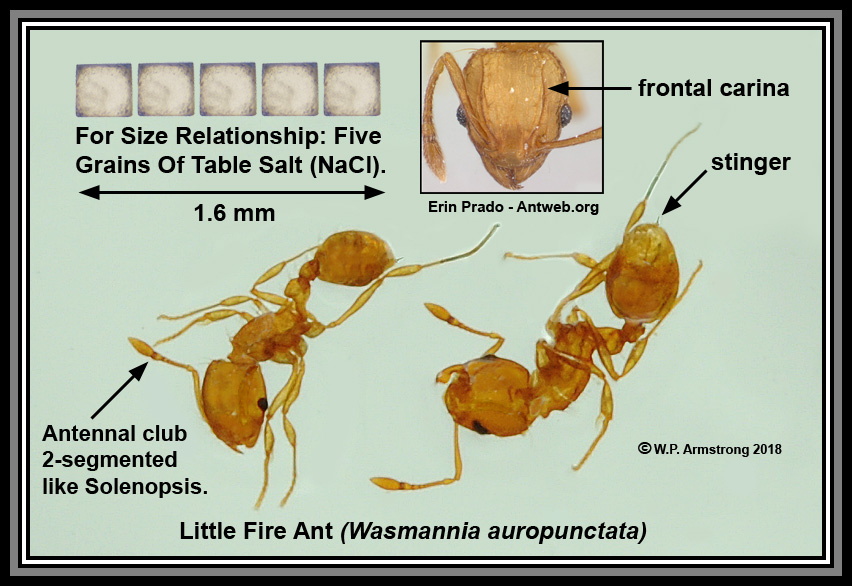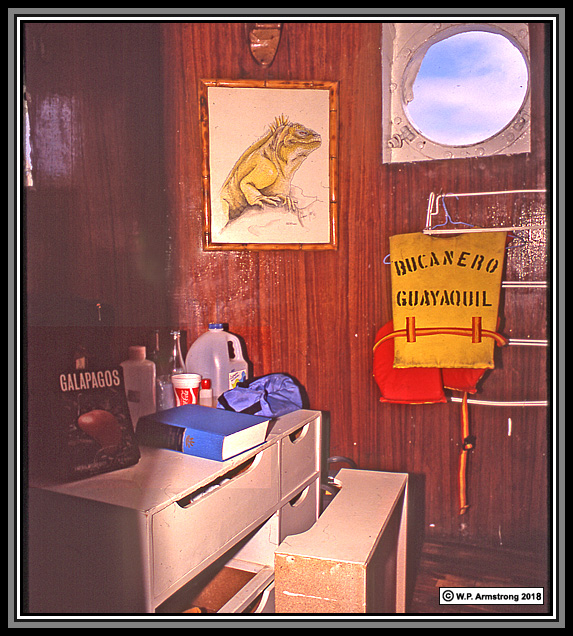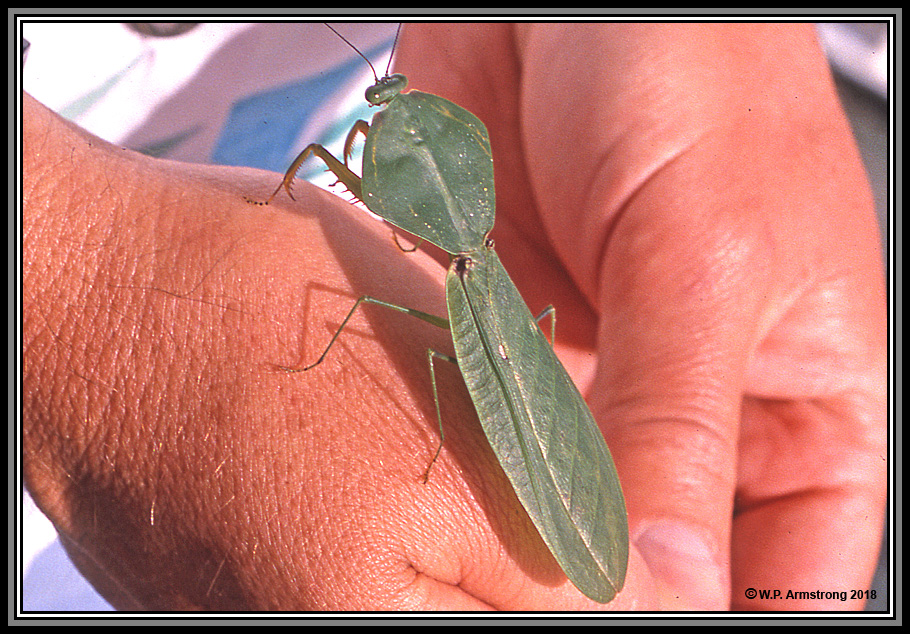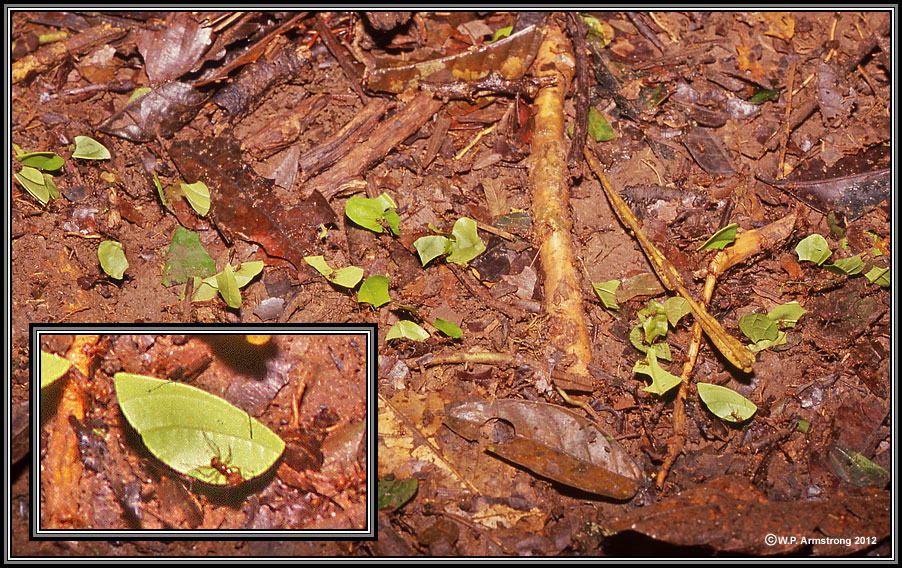Galapagos Islands
|
|
Galapago Islands: Palomar College Field Trip August 1989
Scanned Ektachrome Transparencies by W.P. Armstrong, August 1989
|
|
M/N Bucanero anchored off the shore of Hood Island.
Brown pelican with M/N Bucanero anchored off Baltra Island.
Pinnacle Rock on Bartolome Island.
Wet landing in panga, Gardner Bay (Hood Island).
|
Marine iguana (Amblyrhynchus cristatus) on Hood Island. This is an excellent example of adaptive radiation where ancestral species colonized a new habitat and evolved into different species. Many thousands of years ago, iguanas floated out to these volcanic islands from the mainland of Ecuador. The new species evolved in response to different selection pressures that enabled them to fill unique ecological niches. This species is unique amoung modern lizards because it dives and forages in the sea. There are also endemic land iguanas on the Galapagos Islands that feed on prickly pear cactus and other vegetation. The story of Darwin's Finches on the Galapagos Islands is another classic example of adaptive radiation.
|
|
Marine iguanas on Hood Island.
|
|
Marine iguanas and sea lions on Hood Island.
|
|
Drift seeds from Floreana Island: A. Caesalpinia bonduc. B. Manchineel Tree (Hippomane mancinella). C. Sea Purse (Dioclea). D. Prickly Palm (Acrocomia). E. Ipomoea pes-caprae. F. Sea Bean (Mucuna). All of these probably originally from mainland; however, Dioclea & Acrocomia not on islands. Single specimen of mainland rain forest sea bean (Mucuna rostrata--probably M. sloanei) reported from Santa Cruz Island.
|
Blue-Footed Booby (Sula nebouxii) on Hood Island.
Masked Booby (Sula dactylatra) on Hood Island.
Male Frigate Bird (Fregata magnificens) on Seymour Island.
Originally identified as young Galapagos fur seal (Arctocephalus galapagoensis)
on Hood Island. They can be difficult to distinguish from sea lions, especially when young. Unfortunately, my image does not show sufficient detail for a positive ID. Note: The Galapagos fur seal is technically not a true seal. It is more closely related to sea lions and belongs to the same family Otariidae.
Sally Lightfoot Crab (Grapsus grapsus) on Espanola (Hood) Island.
|
Giant prickly pear (Opuntia echios var. gigantea) on Santa Cruz Island. This remarkable species evolved a tall woody trunk resembling a ponderosa pine to protect it from browsing by giant tortoises.
|
Galapagos Tortoise (Chelonoidis complex).
|
There are several native species of carpenter ants (Camponotus) on the Galapagos Islands, including C. conspicuus zonatus, C. macilentus and C. planus. C. macilentus and C. planus also have a numbers of unique subspecies on different islands. This appears to be C. planus but I cannot be certain of the subspecies.
|
|
The little fire ant (Wasmannia auropunctata), a minute, invasive species from Central and South America has been introduced to the Galapagos Islands. Although it is tiny, it packs a potent sting and is a potentially disastrous alien introduction. It has the nasty habit of stinging native animals in the eyes and can cause blindness. In the Galapagos Islands, it kills tortoise hatchlings and targets the eyes of adults.
|
|
2 more bad ants in Ecuador, one in Galapagos Islands.
|
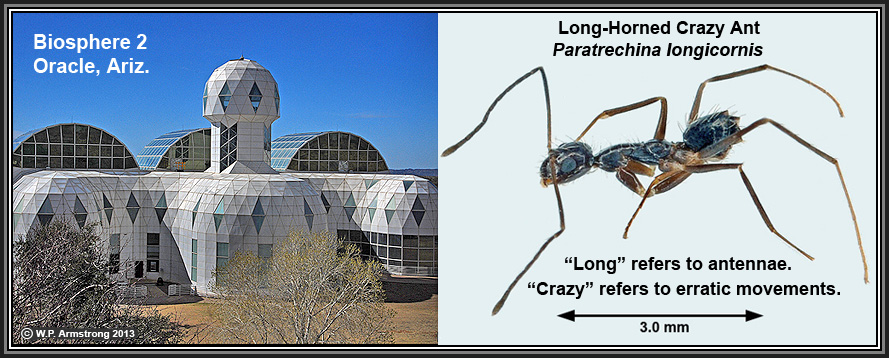
|
I recently visited the University of Arizona's amazing Biosphere 2 ecosystem project. Even with all the safety precautions, including sealed doors and elaborate air-lock system, the Biosphere 2 complex has been invaded by a small, long-legged ant from tropical Asia called the "long-horned crazy ant." I had no trouble locating this ant as I walked up one of the stairways. It can survive in highly disturbed and artificial areas, including ships at sea. Since it can live indoors with humans, there is no limit to the latitude where it can exist. It has been reported from Sweden to New Zealand! More Images on Wayne's Word:
|
Galapagos land iguana (Conolophus subcristatus) on South Plaza Island.
Galapagos passion flower vine (Passiflora foetida galapagensis) on Santa Cruz Island.
|
Floreana Island in early evening: The endemic shrub Lecocarpus pinnatifidus (foreground) with the M/N Bucanero in distance. A few of us were left on this island until the crew discovered that we didn't show up for dinner on the Bucanero!
|
|
My modest quarters on the M/N Bucanero with my 20 pounds of reference books. I used the dresser as a desk and a dresser drawer for a seat!
|
|
After Leaving The Marvelous Galapagos Islands
We Went To Rio Napo, Tributary Of The Amazon
|
|
Our two luxury boats are docked below on river bank!
|
|
Large praying mantis resembling a leaf!
|
|
Leaf-cutter ants (Atta sp.) crossing trail along the Napo River.
|
|






